Time's Up for Artificial Food Dyes
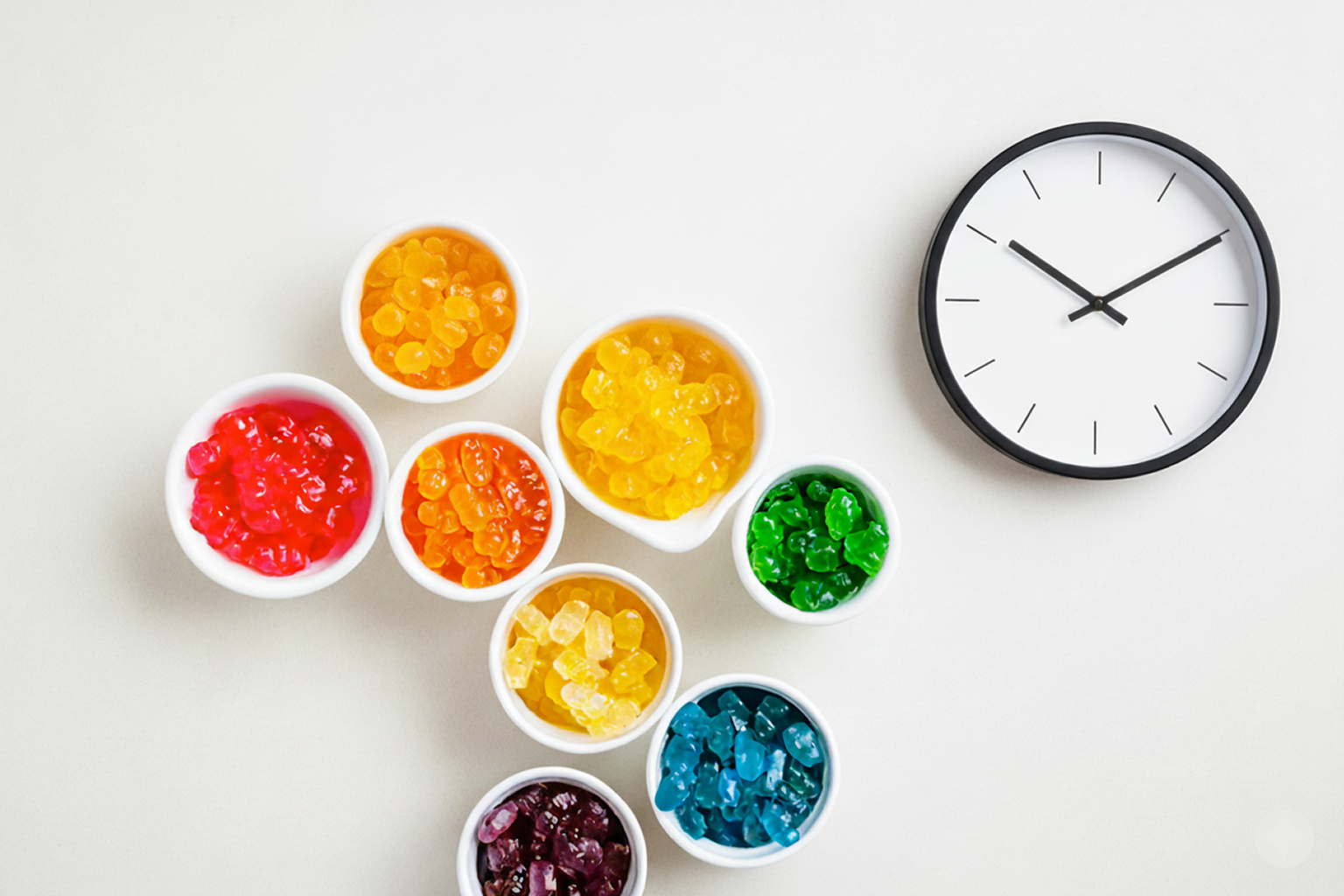
Executive Summary
In April this year, the U.S. food industry began a massive transformation of thousands of products as the FDA phases out artificial food dyes due to concerns about childhood neurobehavioral effects.
- US Government Action: The FDA is decertifying some synthetic dyes immediately and strongly encouraging brands to phase out all others. Natural colorings will be used as replacements.
- The Countdown Clock: The FDA has expressed urgency, with expected end dates from 2025 to 2027, depending on the specific color or if products are sold in schools.
- Widespread Impact: The changes will affect thousands of products and touch every phase of the product supply chain, from farming to marketing.
- Industry Support: CPG companies, industry associations, and advocacy groups quickly and publicly expressed support for the FDA initiative, while providing feedback about how and when.
- Challenges & Opportunities: Reformulating products is a "heavy lift." Supply chains will be rebuilt and disruptions are expected.
- Foodgraph’s Analysis of Prevalence: We estimate that 11.5% of U.S. packaged food products contain synthetic dyes. In addition to beverage, candy, and other brands, retailer private labelers such as Walmart and Target will be the most affected.
- Unprecedented Scale: This undertaking appears to be among the largest product replacement effort since the 2020 COVID disruptions.
- New Products & Marketing: Beyond ingredient replacement, expect new products and marketing strategies to be launched with natural ingredients and "no artificial colors."
- The Foodgraph Advantage: Foodgraph’s product data platform is ready to help the industry navigate the regulatory revamp into a competitive edge by tracking product changes, measuring FDA compliance, benchmarking against peers, and accelerating innovation using natural ingredients.
Massive product changes lie ahead
Artificial food colorings are front page news in the The Wall Street Journal and industry media because the FDA is decertifying some synthetic dyes and discouraging the use of all others, as announced by Secretary Robert F. Kennedy Jr.
The effects will be felt everywhere, from agriculture to marketing
The upheaval of thousands of food products will cause widespread effects from:
- farming to sourcing
- product formulation to manufacturing
- distribution to operations
- data management to analytics
- advertising to personalization
Why are artificial colorings no more?
Red #40 and similar ingredients are commonly used in candy, beverages, bakery, cereal -- including health-oriented products marketed for children.
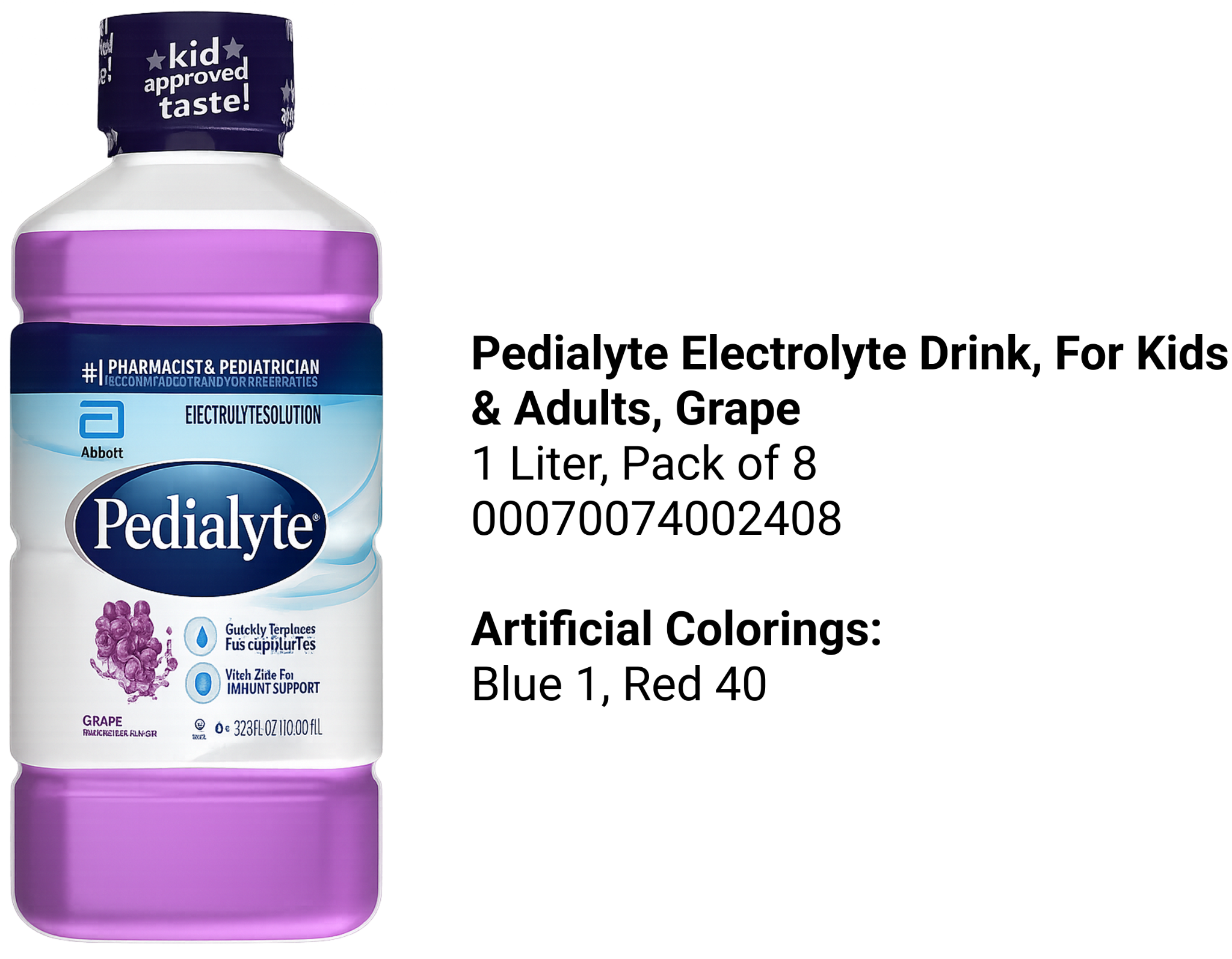
Public policy organizations have long advocated for banning artificial colorings based on extensive research that they can “cause or exacerbate” neurobehavioral problems in children, as described in this scientific review of 27 human clinical trials sponsored by the California EPA.
ALL artificial colorings are affected
The changes are already underway and rolling out from 2025 to 2027.1
- FDA has already or will decertify these artificial colorings:
- FD&C Citrus Red No. 2
- FD&C Orange B
- FD&C Red No. 3
- FDA wants to “eliminate” or “voluntarily phase out” all remaining artificial colorings:
- FD&C Blue No. 1
- FD&C Blue No. 2
- FD&C Green No. 3
- FD&C Red No. 40
- FD&C Blue No. 1
- FD&C Yellow No. 5
- FD&C Yellow No. 6
Artificial dyes will be replaced by natural colorings -- such as beet juice (red), caramel (brown), and turmeric (yellow) -- which are derived from vegetables, minerals or animals. Fifty natural additives are already approved per the FDA’s Regulatory Status of Color Additives, some of them for decades.
The industry is on board
Major brands have already announced compliance. Some are enthusiastic about the changes. Others responded positively, but with feedback about when and which products are reformulated:
- Campbell’s, Removing FD&C Colors from Our Portfolio
- Hershey, How and Why Hershey Is Switching to Natural Food Colors
- Kellanova, U.S. Business On Track to Remove FD&C Colors
- and many more major brands.2
Industry organizations -- such as the Food Marketing Institute and the Consumer Brands Association -- quickly and publicly committed to the changes, without appeals or court challenges common in these times. The International Dairy Foods Association even produced a campaign called the Ice Cream Commitment.
Advocacy groups strongly support the initiative:
- The Academy of Nutrition & Dietetics appreciated the FDA’s “commitment to healthy eating.”
- The Center for Science in the Public Interest (CSPI) was even disappointed that the FDA didn’t go farther by banning all synthetic colors, not just asking the industry to phase out some of them.
The Institute of Food Technologists hosted a special panel on color reformulations just a few weeks after the FDA’s announcement.
Foodgraph’s takeaway: Getting rid of synthetic dyes has found a rare alignment of interests.
Product reformulation is a “heavy lift,” but happening quickly
Synthetic food dyes represent 45% of the global market for food coloring ingredients according to FMI, so many product reformulations will need to be accomplished in a short period of time.
CPG companies -- especially in beverages, snacks, bakery, and other categories -- are facing a “heavy lift” to source natural colorings, as detailed by the International Association of Color Manufacturers (IACM).
U.S. coloring manufacturer Sentient Technologies of Milwaukee -- whose stock is up about 40% since Kennedy’s announcement (NYSE:SXT) -- estimates it will need 10x the amount of the current supply of natural colorings to meet demand.3
The certain winners will be color additive manufacturers, especially American companies4, due to:
- Shorter supply chains, with about 82% of food products listing “USA” as the country of origin (source: Foodgraph).
- Reduced costs for transportation and storage versus foreign ingredient manufacturers to mitigate shelf-life limitations for natural colorings and when refrigeration is required.
- Tariff costs and uncertainties making foreign ingredients less attractive.
In some cases, CPG brands have already created product versions with natural colorings for non-U.S. markets, for example, by using beet juice or paprika extract instead of FD&C Red 40. Nevertheless, sourcing natural ingredients, gearing up manufacturing changes, and relabeling U.S. products will cause significant supply chain disruptions.
The implementation timeline is further compounded by the simultaneous nature of the rollout across brands and as stipulated by the FDA.
Foodgraph Analysis: How prevalent are artificial colorings?
We analyzed Foodgraph’s catalog of grocery product data to find out. Our catalog curates the largest and freshest data about products from large brands (like Mars Wrigley), small and medium brands (like Mt. Olive), and private label brands (like Walmart’s Great Value). This analysis includes packaged food products only, which were offered between September 2021 and July 2025.5

Most of the products with synthetic dyes have more than one artificial coloring in the ingredients list. With up to 7 synthetic dyes per product, managing the changes will be more complicated. Multi-dye products are due to one or more reasons:
- color mixes to create new colors or shades (e.g. Blue 1 and Red 3 to make purple)
- multiple colors in a package (e.g. cake sprinkles)
- variety packs (e.g. strawberry and blueberry)
- alternative dye types used in formulation (Yellow 5 and Yellow 5 Lake)
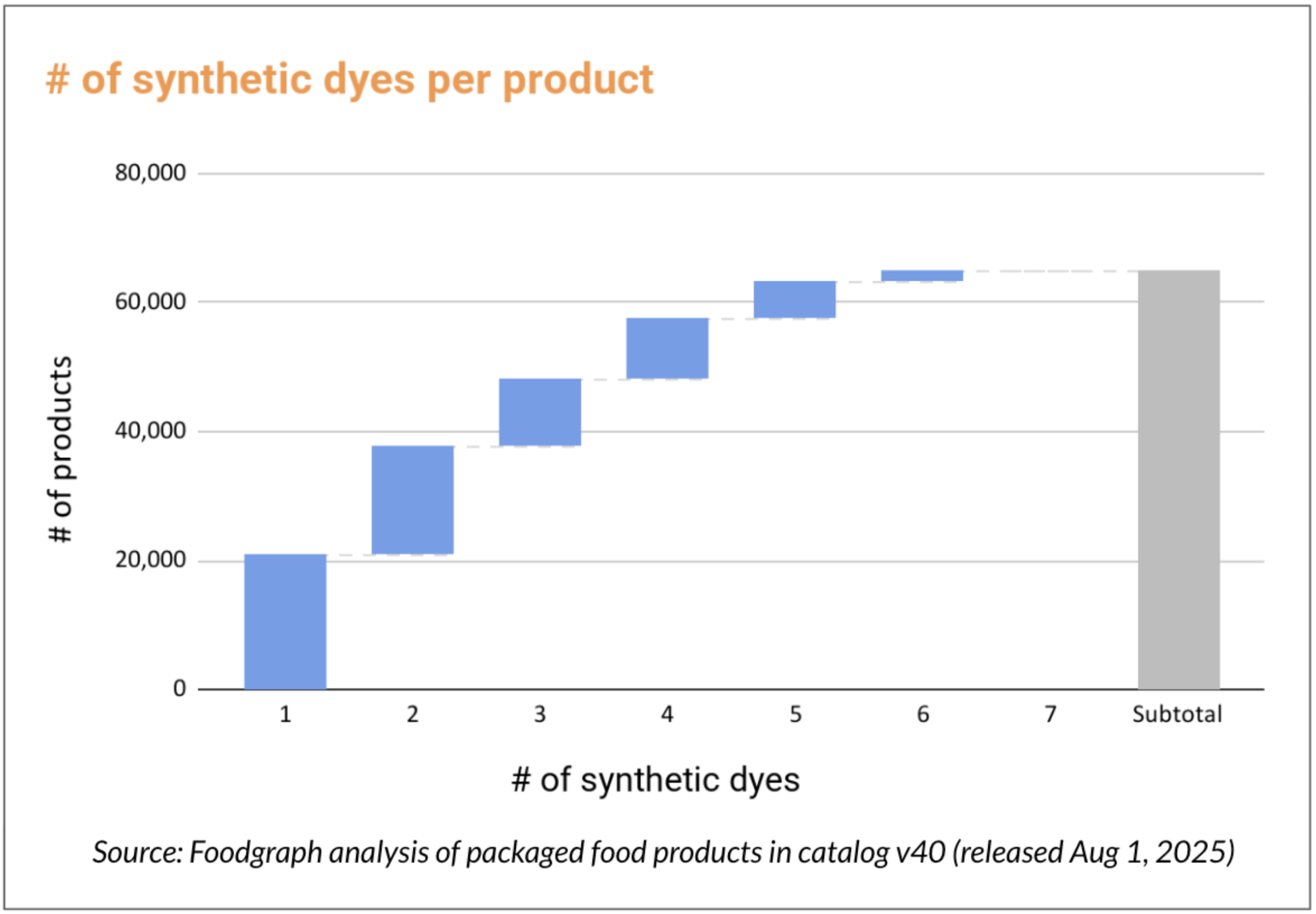

Notable publication: In the first significant review in many years, a study published in the Journal of the Academy of Nutrition and Dietetics in September analyzed the presence of synthetic dyes in U.S. food products. Compared to the Foodgraph analysis, the Journal’s study used a data set from 2020 and evaluated 7,428 products.6
Private Label brands are the most affected
Of course, candy brands (e.g. Skittles ), cookies (Oreo), and soft drinks (Mtn Dew) have synthetic dyes in many products, as do processed meats (Tyson) and Latino foods (Goya).
Because Foodgraph’s catalog includes retailer private label products, our analysis was also able to determine that these brands are the most impacted.
Unlike Mars Wrigley, which primarily sells snacks and candy, retailers such as Walmart and Target sell their own branded products in all categories, so they have many more products with synthetic dyes that may need to be redeveloped.
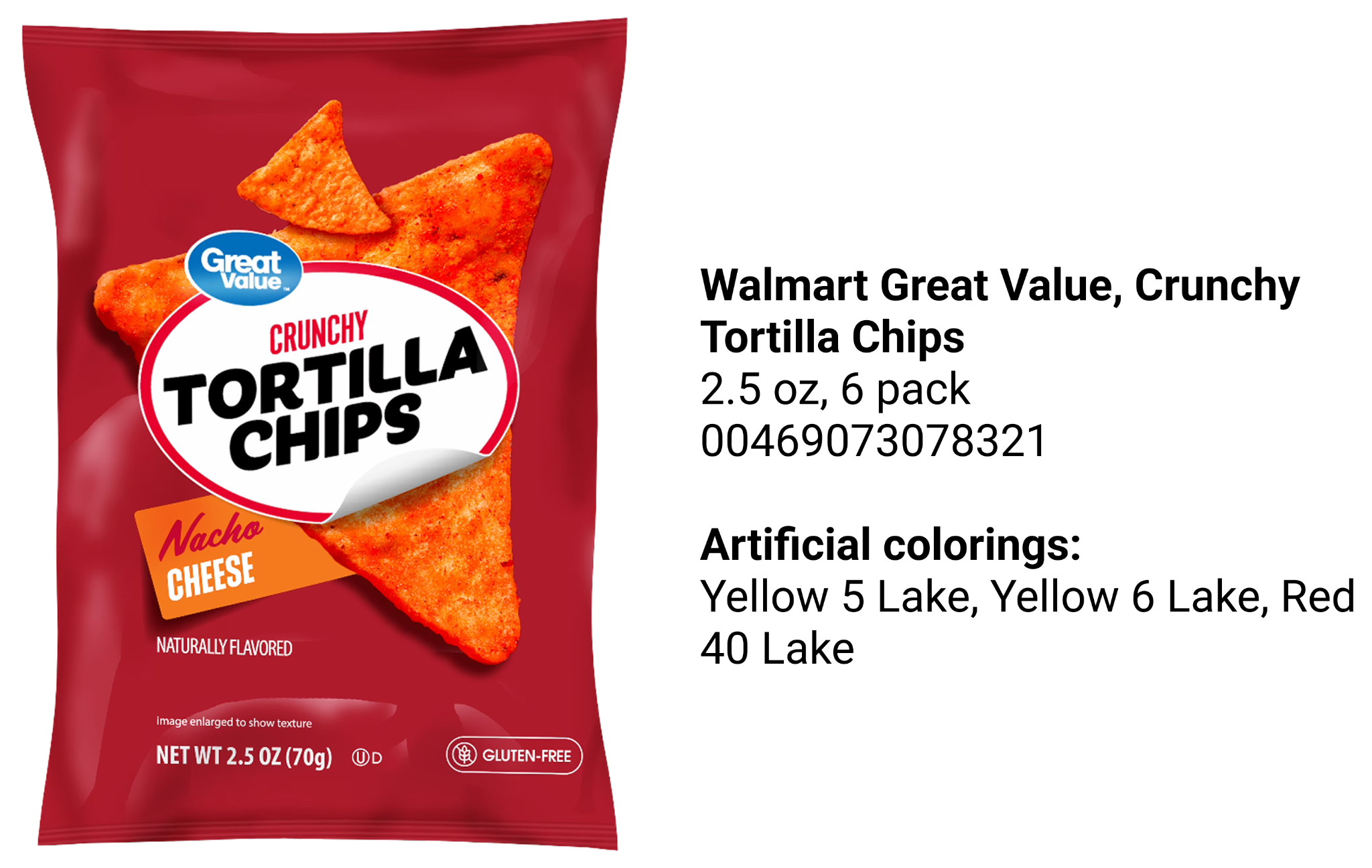
Some retailers are already marketing products based on the absence of synthetic colors using website categories or filters. Understanding artificial vs natural color ingredient names -- despite existing FDA guidelines -- has been challenging. For example, Target promote private label products with synthetic dyes as having No Artificial Colors.
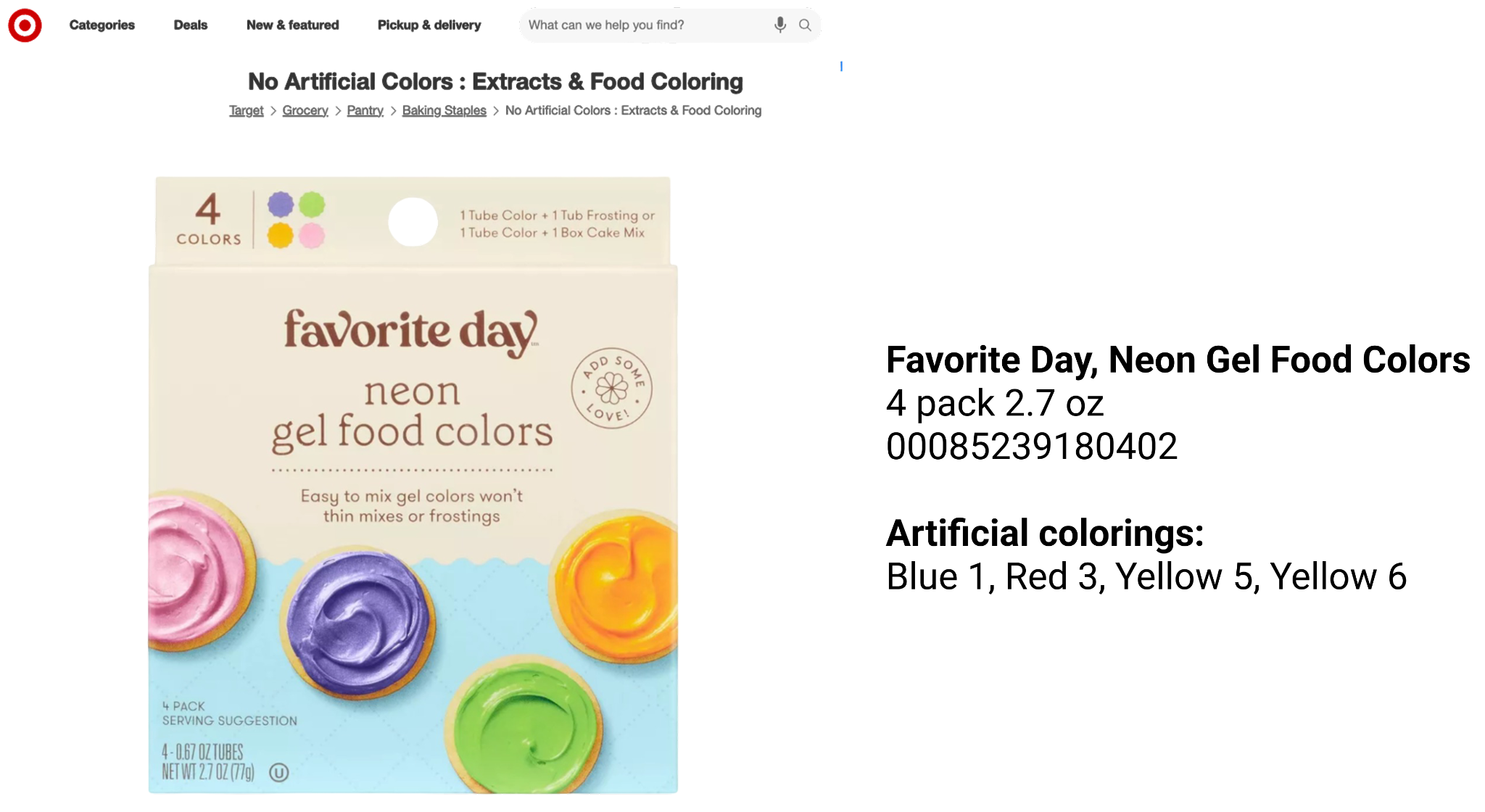
The industry effects will be widespread
An industry-wide replacement of food products is uncommon and highly-disruptive. In 2020, supply chains were severely disrupted due to COVID, resulting in large-scale product changes. Previously, the 2018 U.S. Nutrition Facts labeling changes and the 2006 U.S. food allergen labeling law (FALCPA) may have spurred some ingredient reformulations, but most of the effects were restricted to package redesign.
For changing from artificial to natural coloring, the entire supply chain will be impacted:
- new crops planted
- new additives created
- new ingredients sourced
- new formulations developed
- new manufacturing processes engineered
- new packaging designed
- new assembly lines stood up
- new products distributed
In commerce enablement, data and marketing will be remade across thousands of products:
- new SKUs (stock keeping units) added to catalogs at a much higher volume than normal
- new enriched attributes added to master data catalogs (e.g. “artificial dyes” = [true, false])
- new promotions developed
- new personalization algorithms defined
- new social content designed
- new campaigns rolled out
Some previews of new marketing approaches
Leading brands are already promoting natural ingredients in existing products, as shown below:
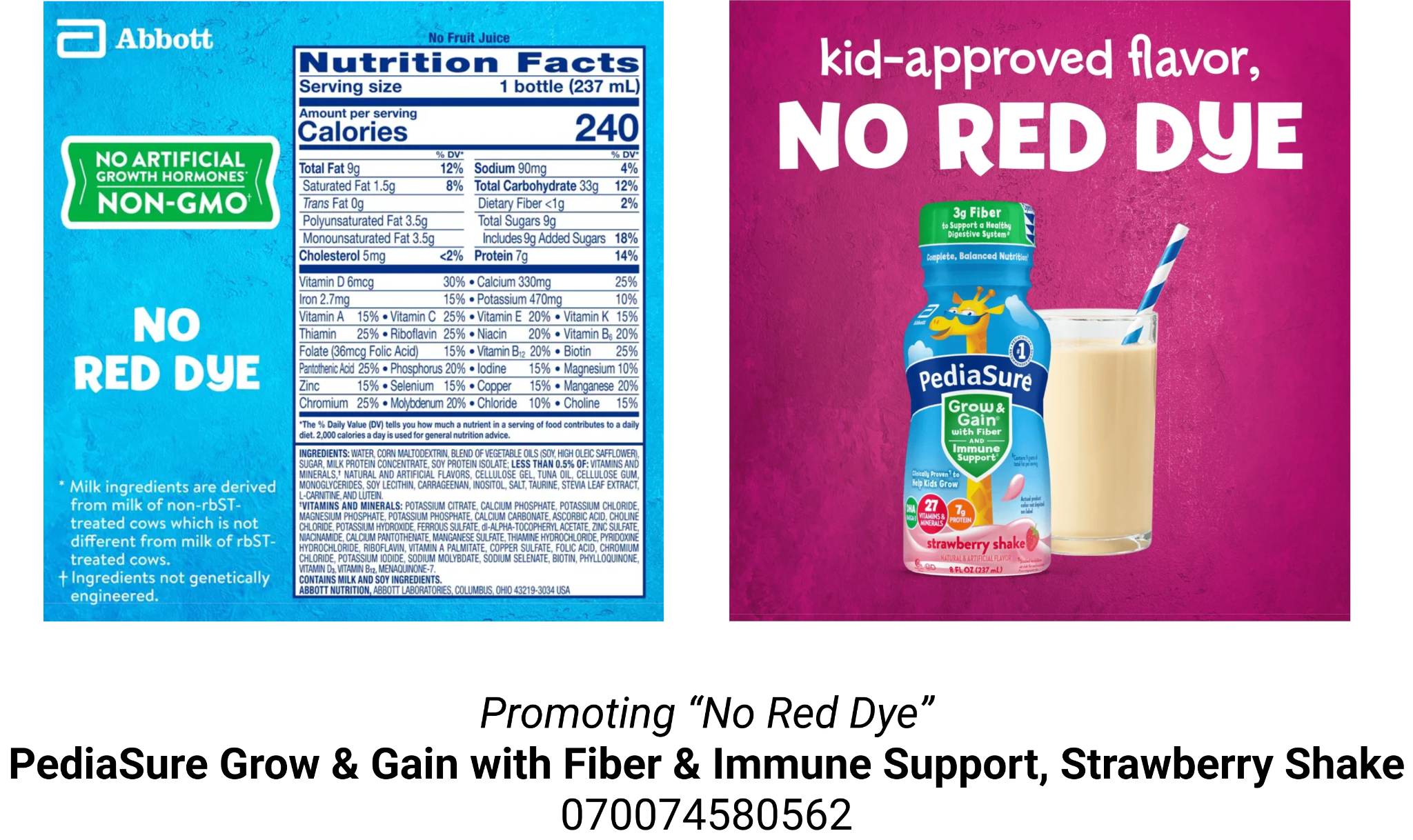
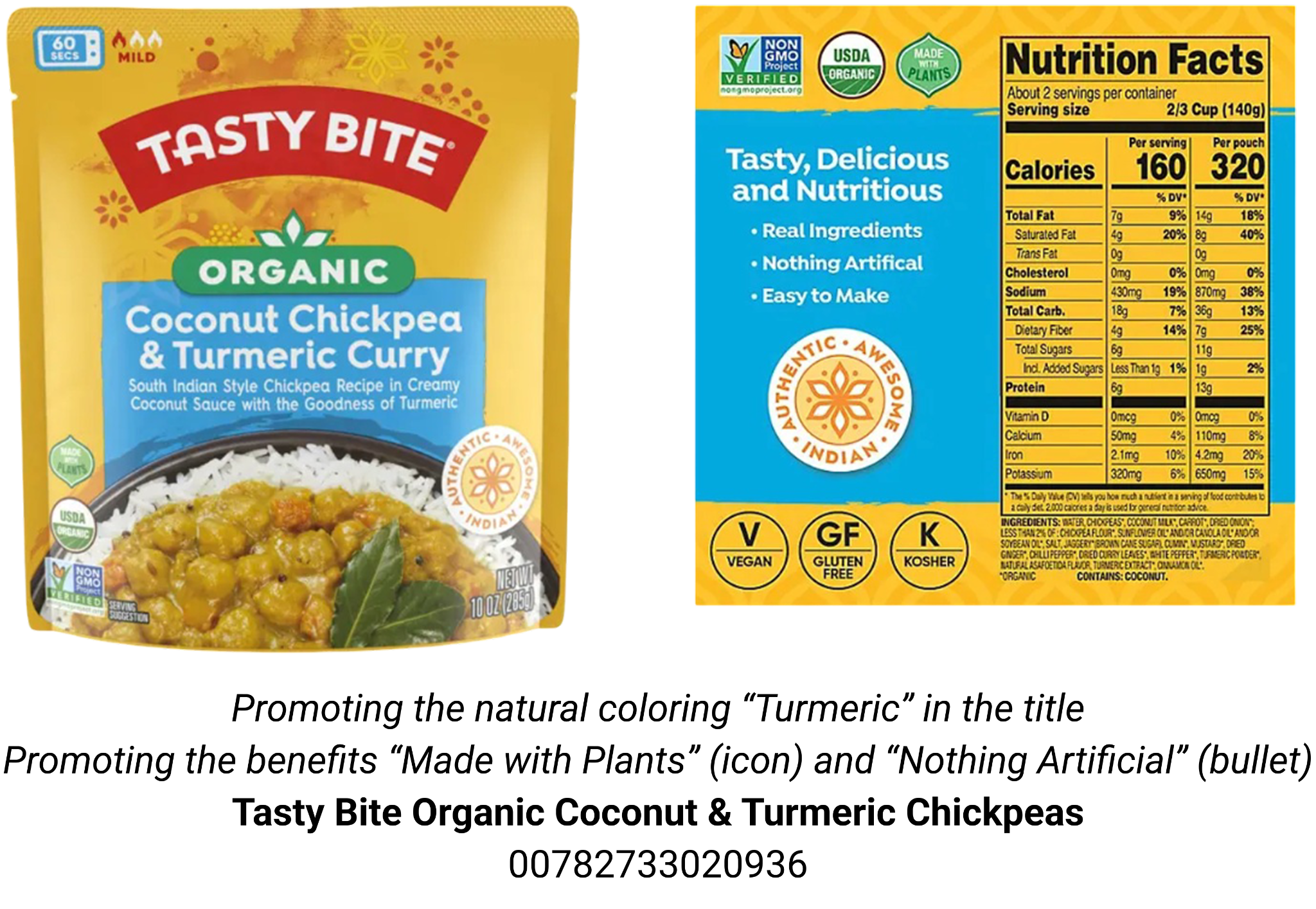
New products can even be ideated using new natural colorings:
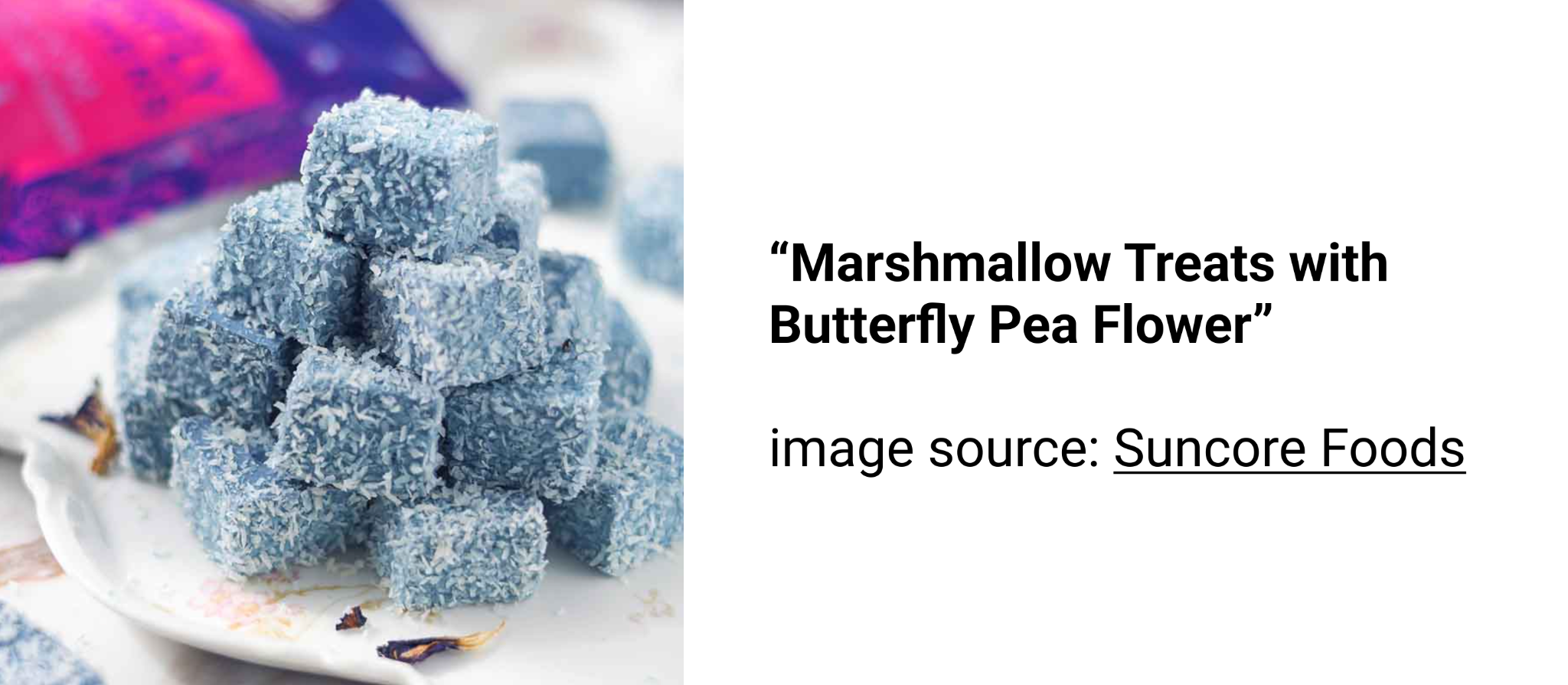
About Foodgraph
Foodgraph has built the largest and freshest data catalog of U.S. grocery products. Our platform powers smarter decisions across the grocery ecosystem. Using our national catalog and data quality, companies can turn this regulatory shift into a competitive edge.
- Track compliance: Monitor synthetic dye removals across categories and brands.
- Benchmark competitively: Compare product attributes and positioning against peers.
- Audit content at scale: Identify gaps in labeling, claims, and digital shelf presence.
- Accelerate innovation: Discover ingredient trends and leverage natural colorings to ideate and launch new products faster.
Let’s Talk
Contact us to gain a competitive advantage during the synthetic dye transition.
Endnotes
1. In the FDA’s original news release of April 22, 2025, HHS, FDA to Phase Out Petroleum-Based Synthetic Dyes in Nation’s Food Supply, the regulator stated that it is “working with industry to eliminate [the] six remaining synthetic dyes … from the food supply by the end of next year,” i.e. 2026.
Since then, the FDA has provided updates on this webpage,Tracking Food Industry Pledges to Remove Petroleum Based Food Dyes and stated it is working to “eliminate [the] six remaining certified color additives by the end of 2027.
Even more recently, in the news release FDA Proposes Revocation of Authorization for Orange B in Food, the agency wants to remove petroleum-based food dyes in products sold in schools by the start of the 2026 school year and more broadly by 2027.
The agency has also added the remaining certified synthetic dyes to its List of Select Chemicals in the Food Supply Under FDA Review, meaning that it may be “revoking authorizations or approvals for certain uses.”
The approximate color swatches in this section were captured from the International Association of Color Manufacturers (IACM), Color Library, the University of Florida, and other public sources.
2. More industry support for the FDA’s new synthetic dye policies: Conagra, Danone, General Mills, Grupo Bimbo, J.M. Smucker, Kraft Heinz, Mars Wrigley, Nestlé USA, PepsiCo, Sam's Club (Walmart), Tyson Foods, and WK Kellogg
3. The Wall Street Journal, Why Phasing Out Artificial Food Dyes Is So Complex, July 8, 2025 (at 2:38)
4. According to FMI, top tier color additive manufacturers with U.S. headquarters include Archer Daniels Midland (ADM) and Sensient, with other U.S. leaders companies such as DDW, Ingredion, Kalsec, and McCormick. They will face strong competition from top tier foreign companies Chr. Hansen, DIC (BASF), DSM, and Symrise, and beyond the top tier, Dӧhler, GNT and Synthite.
5. Source: Foodgraph catalog v40 release, August 1, 2025
Sub-sources: 29 data sets from brand syndicators, retail and wholesale websites, and the USDA
Data set: 801,231 products, including private label, large brands, and small brands, and for both food & non-food
Selection: 563,854 packaged food products with ingredients
Excluded: alcohol, health & beauty, household, medicines, and pet supply products
Analysis: AI-assisted queries for FDA-compliant dye names and non-compliant dye names, as they have been published by brand and retailers for consumer use on grocer websites and printed labels.
6. The Journal’s timely study is the first significant analysis in many years to address the presence of synthetic dyes in food.
The lead finding was: “Synthetic dyes were present in 19% of products” in 2020.
(N=7,428 products, after blank and bad data values were removed).
The study:
- analyzed a 2020 data set from a product catalog provided by Label Insight, with 426,980 products (compared to our catalog of 874,758 products).
- selected products for only the “top 25 manufacturers” (brand owners), yielding a sample of 50,929 products.
Some limitations of the source data affected its findings:
- No products introduced since 2020 were available in the source data (i.e. post-COVID).
- No private label brands were included or available in the source data. For example, Walmart’s 2,500+ private label food products -- such as “Great Value” and “bettergoods” -- were absent. The total number of Walmart own food products is larger than 20 of the 25 brands that were included in the study.
More generally, private label products account for about 23% of units sold, and are growing 4x faster than major brands, per the Private Label Manufacturer’s Association (PLMA), 2025 Private Label Report. - No ingredient changes in the past 5 years were available from the source data. Significant product reformulations occurred during and after COVID supply chain disruptions.
- No mid- and small-brand products were included or were not available from the source data.
More to explore
Discover additional articles, updates, and perspectives.
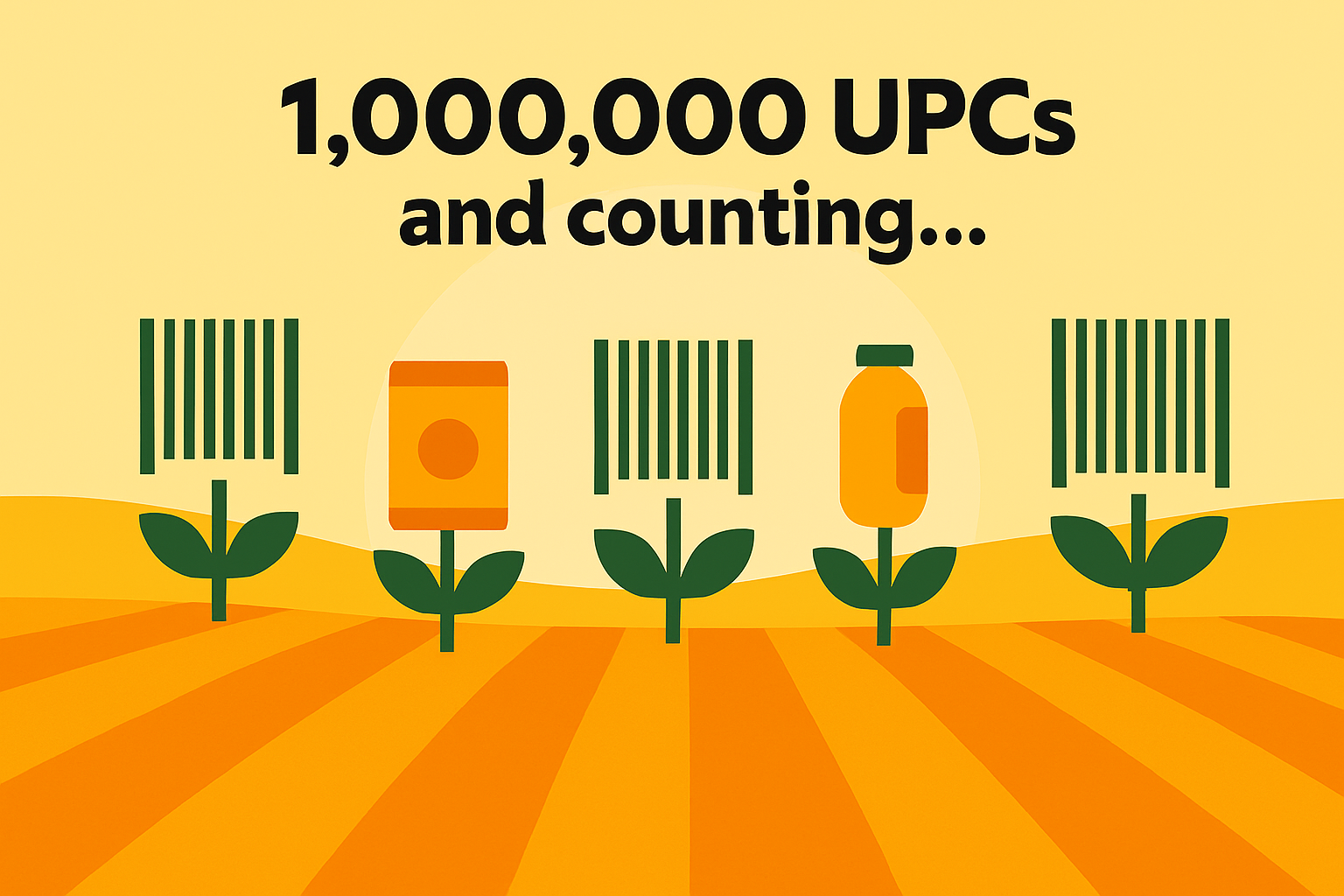
Harvesting Trends x 1M UPCs
From emerging flavors to functional foods, Foodgraph continues to capture what’s next on the shelf — revealing how retailers and brands adapt to evolving shopper behavior across the store.
Foodgraph offers the largest and freshest catalog of U.S. grocery products, for applications ranging from receipt matching to enhanced personalization, shelf monitoring, benchmarking and more. This new v44 release adds 210,000+ grocery products to our catalog.
Trends Rule in New Products
Foodgraph’s catalog captures the trends shaping the aisles, from functional beverages to seasonal scents and weight loss supplements.
As shown in the examples below, national brands are expanding their product lines to connect consumer health requirements with lifestyle preferences.
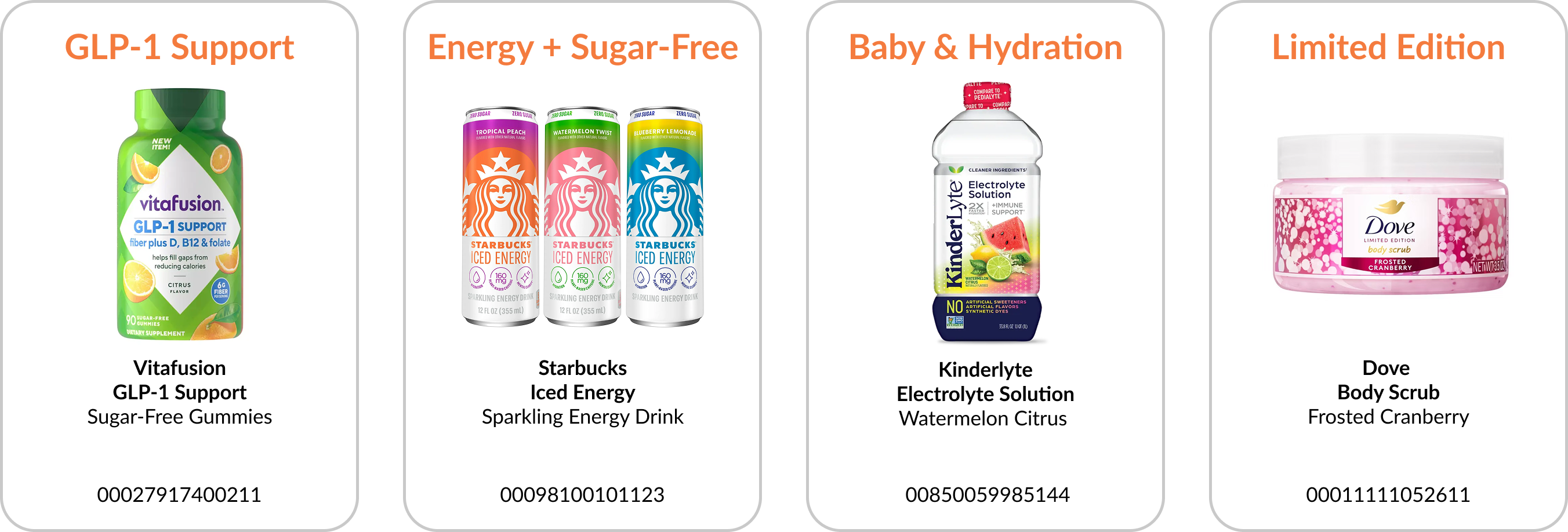
Deep Dive on GLP-1:
- GLP-1 products are rapidly expanding across diverse categories.
- Our catalog now includes 99 products marketed for GLP-1 support, up from 52 since our September release (v42).
- Brands like BOOST and Supergut lead, but also new or repositioned products from Egglife, Healthy Choice, and Hu.
- Products range from supplements to beverages, bars, and vitamins -- and even donuts and prepared meals.
- Supplements feature trendy flavors like blood orange or watermelon.
- Contact us to learn more about how to harvest trends from products.
Private Label: No Longer Generic Brands
The no-frills “our brand” has given way to full-fledged products that compete with national brands -- or eclipse them. Retailers are taking on CPG to score bigger margins and customer loyalty with unique assortments.
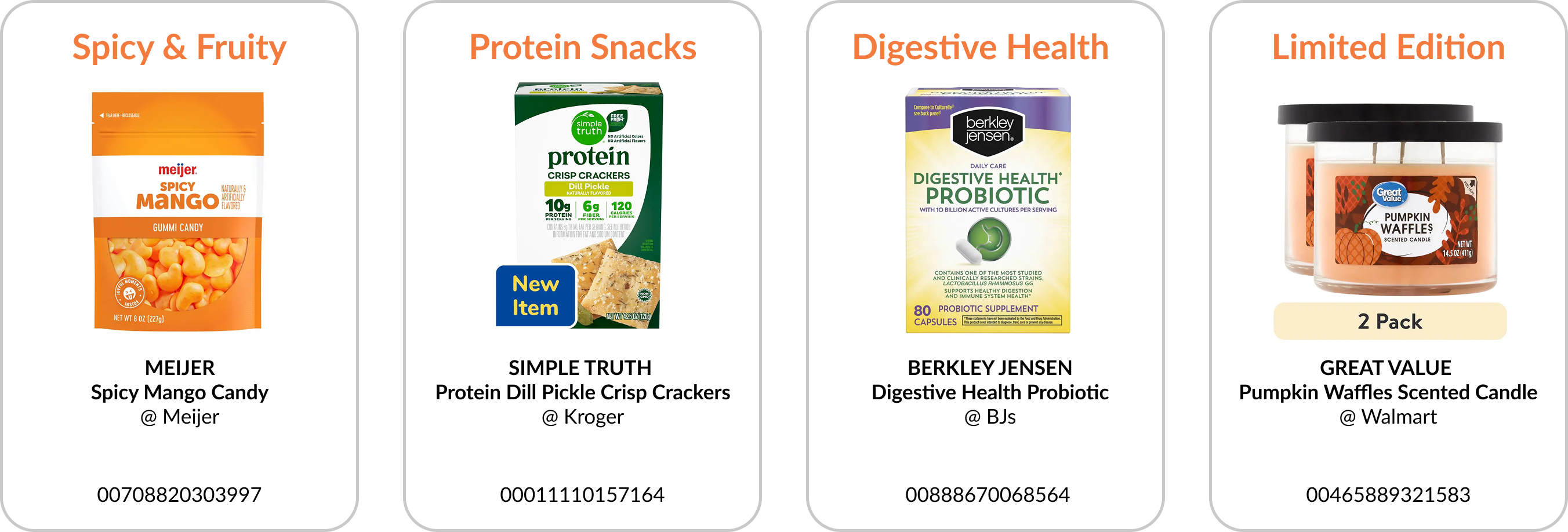
Power Search: Find What's Next
Just released!
Foodgraph Power Search enables easy product discovery using any criteria.
This high-performance search experience enables instant filtering across product attributes for values that you define, with support for fuzzy matching, new products, and updates.
Use cases include:
- researching competitors’ products;
- analyzing product positioning in data and images;
- building consumer audiences using derived attributes;
- understanding ingredient formulations;
- and much more.
Power Search is available now, as an API or user interface (pictured below), fueled by Foodgraph’s growing catalog of 1M+ grocery products.
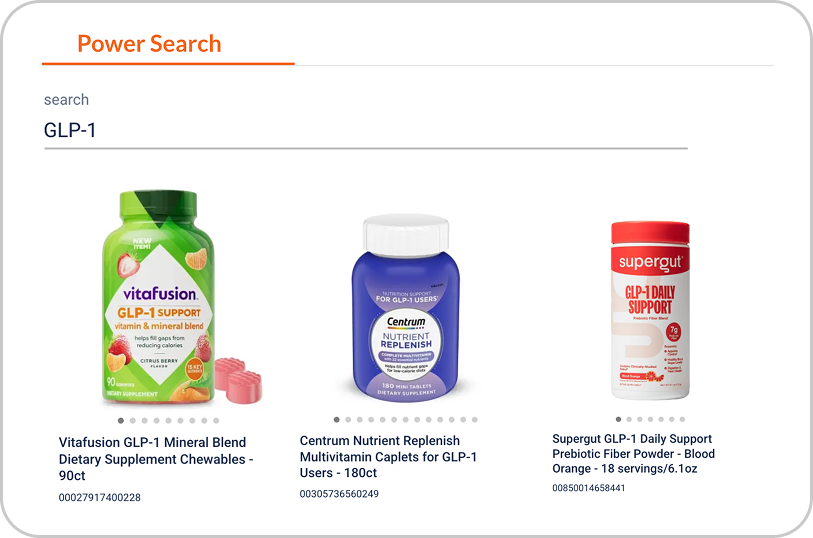
What we're reading
Recommended reading about grocery trends in food & health:
- Tastewise, 2026 Trends Forecast
- dunnhumby, US Consumer Trends Tracker
- IFIC, 2025 Food & Health Survey (International Food Information Council)
And:
- Foodgraph, Time's Up for Artificial Food Dyes
Next Catalog Update
Our next major update is planned for December, with a spotlight on Christmas and New Year's products.
Thank you for following our progress! If you need more information, send me a note. I’d love to hear how we can support your work.
Warm Regards,

David Goodtree
Founder and CEO, Foodgraph
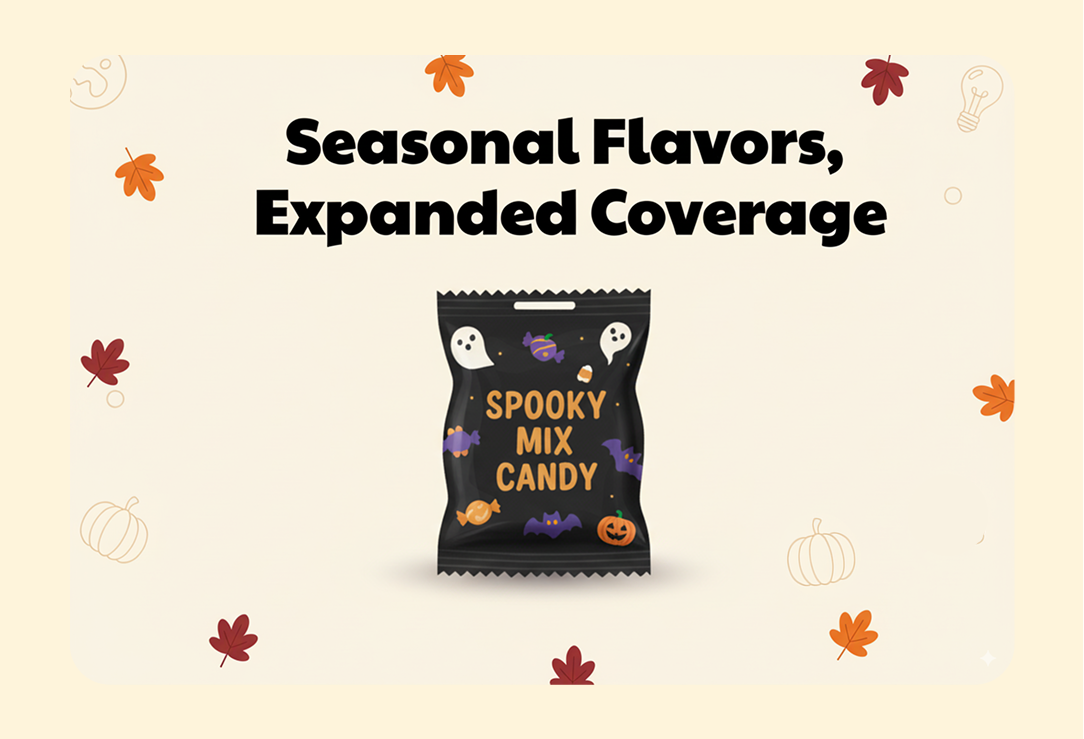
Fall Flavors and 75,000 New SKUs
Foodgraph offers the largest and freshest catalog of US grocery products for applications ranging from receipt matching to shelf monitoring, store ops, analytics, and more. Our v42 catalog tracks more than 875,000 products, up 39% YTD.
Seasonal Flavors
Our catalog captures the surge of new seasonal foods -- featuring flavors such as pumpkin spice, maple, and cinnamon -- in candy, ice cream and even cheese!
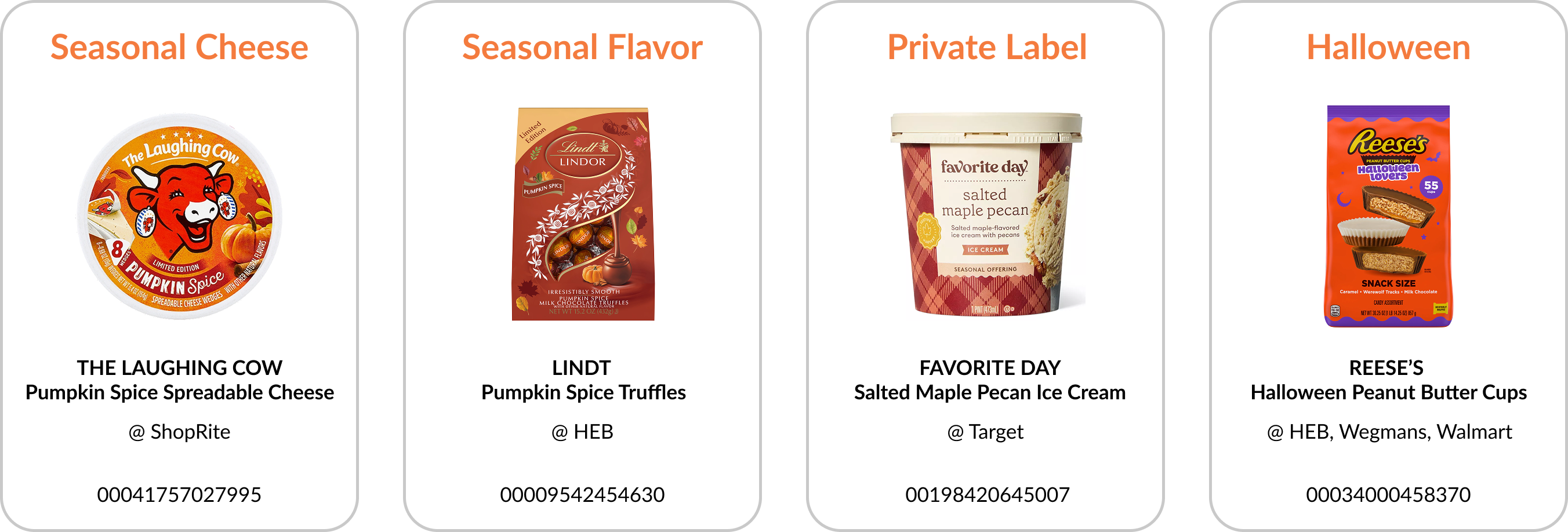
Expanded Aisles Coverage
Our catalog continues to expand beyond food to all aisles of the store, with everyday essentials and even pumpkin-scented soap!
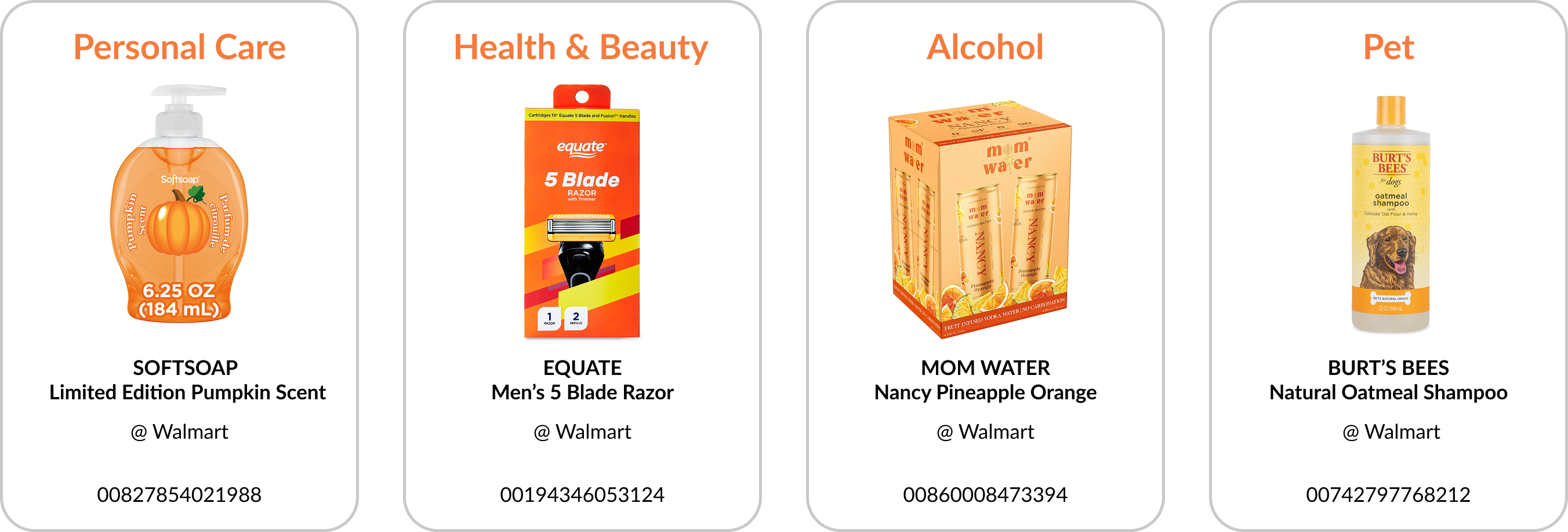
Time’s Up for Artificial Food Colors
The FDA’s phase-out of artificial colors is moving fast. Our analysis shows 11.5% of U.S. packaged foods contain synthetic dyes, across all aisles of the store. Most of those products are now on the clock and must be reformulated immediately, or should be phased out through 2027. The impacts will ripple across the entire supply chain, from the farm to consumer marketing.
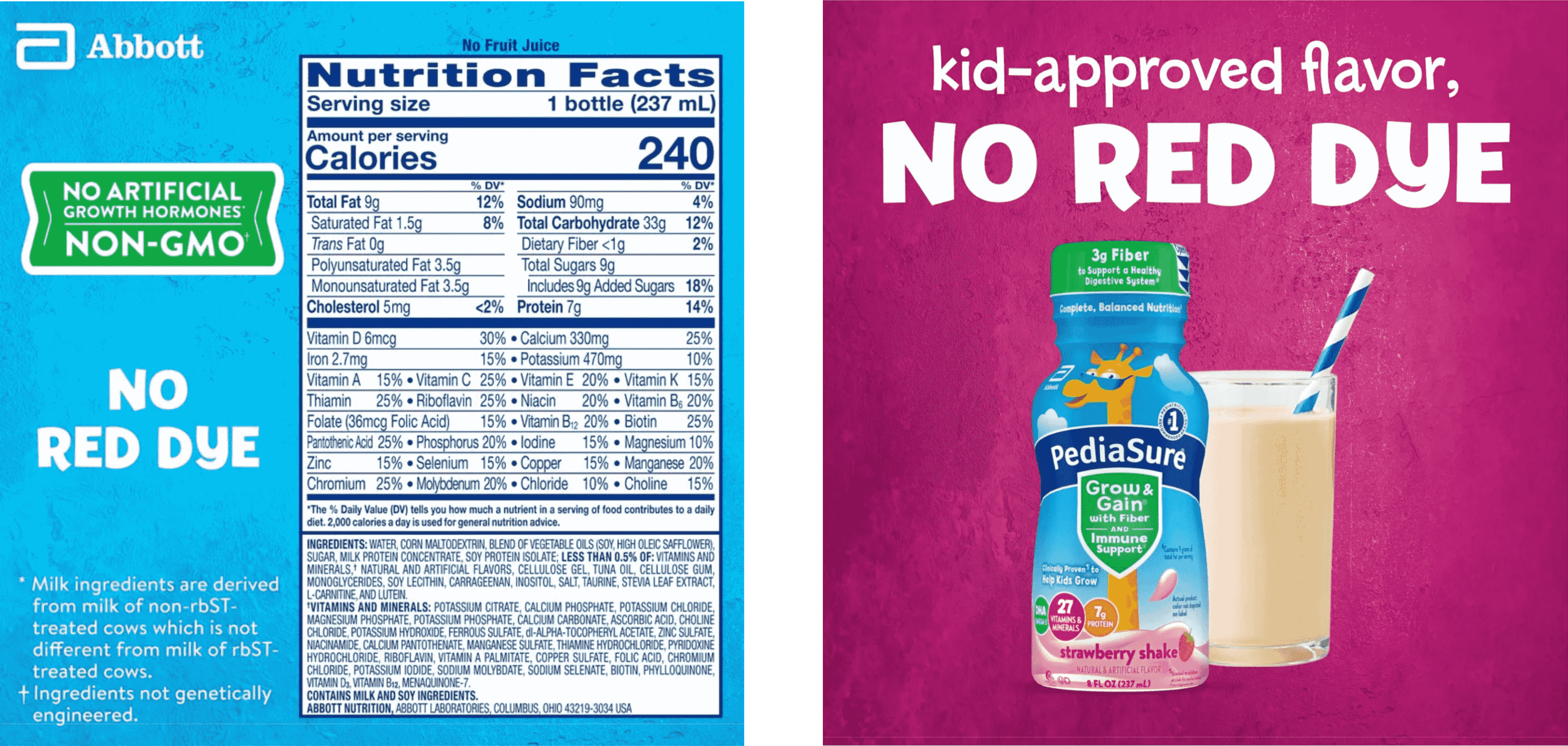
Foodgraph helps companies turn this regulatory shake-up into an advantage by tracking product changes, measuring compliance, and accelerating innovation using natural colorings.
Contact us to request the whitepaper Time's Up for Artificial Food Colors and learn how the transition from synthetic dyes will affect your business.
Next Catalog Update
Thank you for following our progress! If you need more information, send me a note. I’d love to hear how we can support your work.
Warm Regards,

David Goodtree
Founder and CEO, Foodgraph

School’s In. So Are 60,000+ New SKUs.
Our v40 catalog now includes 800,000+ products, an increase of 27% year to date.
Back to School - And Beyond the Snack Aisle
Each catalog captures new products and updated data and images. Whether your application is product matching, enrichment, or analytics, we’ve got the data. Here are a few of the product introductions in our newest release:
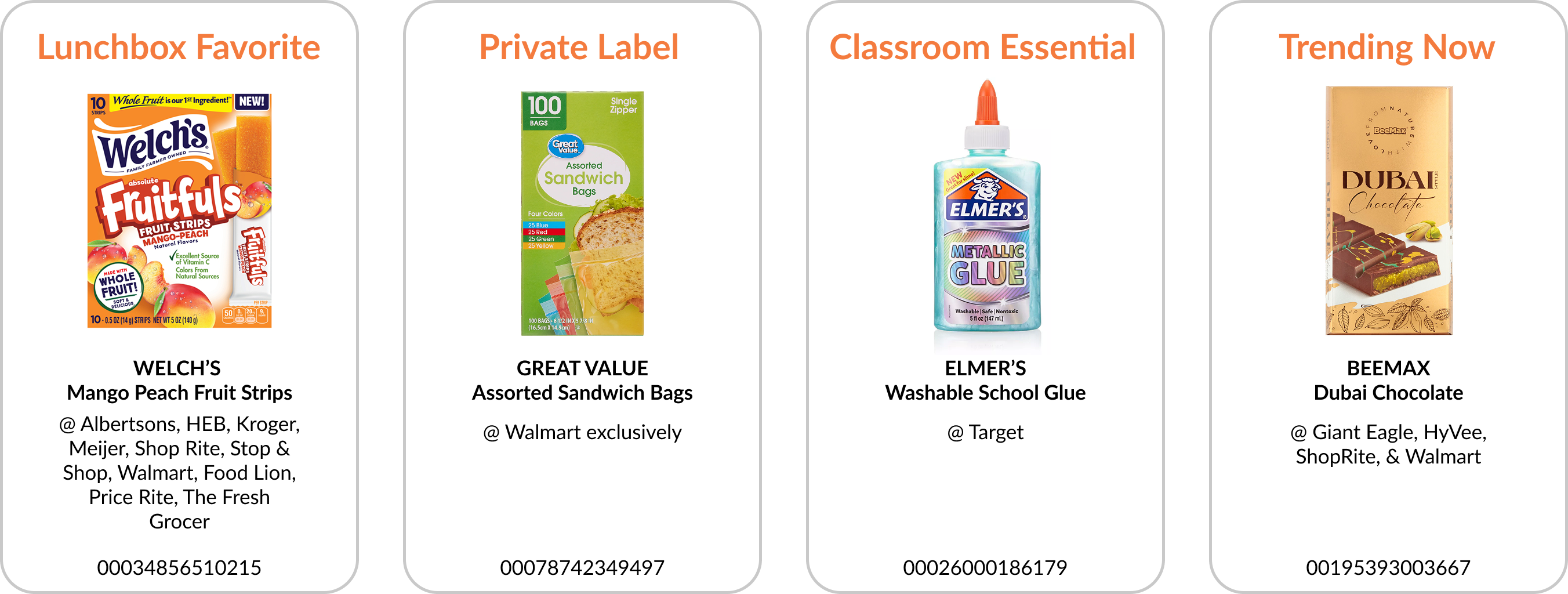
Dubai Chocolate is a new flavor and it’s trending. (It’s delicious, too). Using AI analytics, we found that at Christmas last year, no major retailers were offering any Dubai Chocolate products. But in our newest catalog, we see that 12 different brands are currently offered in retailers across the USA. Foodgraph's catalog is always up-to-date with new product introductions and useful analytics.
In addition to packaged food products, we’re continuing to expand coverage across all aisles of the store, adding items in Household, Personal Care, Health & Beauty, and Pets. And more to come!
Retailer Assortments: Who's Winning?
.png)
Each retailer’s unique mix shows how they stack up as a “destination” store.
Notice that Price Chopper and Stop & Shop have the lowest unique mix, which is expected for supermarkets. Compare them to Sprouts and Whole Foods, which are specialty retailers, and Walmart with its high percentage of private label products.
Our AI classifier agent and product matching algorithms enable high-value analytics across categories, retailers, attribute compliance, and much more.
New Retailers Added
Foodgraph’s catalog has grown to include product data from 29 sources, adding four new sources since our last release, including the packaged food products from these major retailers.

Next Catalog Update
Looking ahead, our next major update is planned for September, with a spotlight on fall flavors and Halloween products.
Thank you for following our progress! If you need more information, feel free to reach out. I’d love to hear how we can support your work.

David Goodtree
Founder and CEO, Foodgraph
Get better grocery product data today.
Book a demo today to learn how Foodgraph can help.
